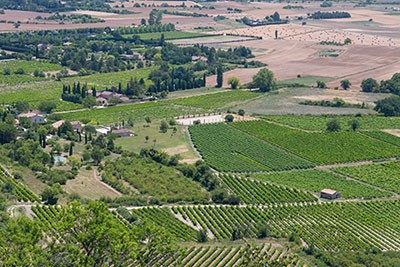FOR IMMEDIATE RELEASE | October 20, 2021
Urban wastes used as fertilizers contain higher PFAS than livestock manure
“Target and Nontarget Screening of PFAS in Biosolids, Composts, and Other Organic Waste Products for Land Application in France”
Environmental Science & Technology
Because of their useful surfactant properties, per- and polyfluoroalkyl substances (PFAS) have been massively produced for non-stick coatings, water-repellant fabrics and firefighting foams. However, scientists have detected these highly stable “forever chemicals” throughout the environment, prompting toxicity concerns. Now, researchers reporting in ACS’ Environmental Science & Technology have characterized PFAS in contemporary and historical organic waste products applied to agricultural fields in France, finding the highest amounts in urban samples, with compounds changing over time.
Although production of the most concerning PFAS has been banned or voluntarily phased out in many countries, the compounds linger in the environment. Also, they have been replaced with other PFAS that have uncertain environmental and health effects. Humans and livestock could ingest PFAS and excrete them in their waste, and the compounds could leach into wastewater. In addition, when wastes are applied to agriculture fields as fertilizer, PFAS could contaminate groundwater and bio-accumulate in food crops. Sébastien Sauvé with colleagues from France’s National Research Institute for Agriculture, Food and Environment wanted to comprehensively characterize multiple classes of PFAS in contemporary and historical organic waste products — including livestock manures, urban sewage sludges and composts, and industrial wastes — applied to French agricultural lands.
The researchers selected 47 samples of organic waste products intended for field application, collected in France from 1976 to 2018. They analyzed the samples for known and previously uncharacterized PFAS by high-resolution mass spectrometry. Over 90% of the samples contained at least one PFAS, with up to 113 compounds detected in a single sample. The team detected fewer and lower levels of PFAS in livestock manures than in wastes of urban origin. In the urban wastes, they detected high levels of PFAS compounds that are not commonly monitored, suggesting that previous studies underestimated total PFAS levels. Historical urban samples contained higher levels of phased-out PFAS, whereas contemporary samples were dominated by compounds called fluorotelomers, which could degrade to more persistent PFAS in the environment, the researchers say.
The authors acknowledge funding from the Alliance Nationale de Recherche pour l’Environment; the Natural Sciences and Engineering Research Council of Canada; the Fonds de Recherche du Québec, Nature et Technologies; the Canada Foundation for Innovation; the Strategic Environmental Research and Development Program; and the McGill Engineering Doctoral Award scholarship.
To automatically receive press releases from the American Chemical Society, contact newsroom@acs.org.
Note: ACS does not conduct research, but publishes and publicizes peer-reviewed scientific studies.
Media Contact
ACS Newsroom
newsroom@acs.org


